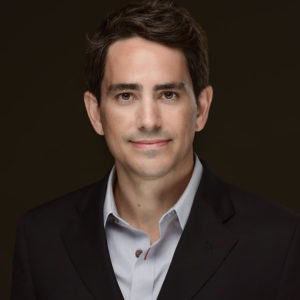
“Good artists copy; great artists steal.” – Picasso
When most people think of entrepreneurs, they envision a creative mastermind who founds an innovative new company or creates some kind of disruptive technology. That’s not an incorrect perception of entrepreneurs, but it is an incomplete one.
Steve Jobs knew that great entrepreneurs also steal ideas. “We have always been shameless about stealing great ideas,” he admitted. Apple didn’t invent the personal computer, the portable music player, or the tablet computer. What Jobs did was take existing ideas and elevate them to their perfect form. Like Picasso, that approach allowed him to create something unique. Something the world had never seen.
He’s often quoted as saying that, “Creativity is just connecting things. When you ask creative people how they did something, they feel a little guilty because they didn’t really do it, they just saw something. It seemed obvious to them after a while.”
When I discuss business acquisition with entrepreneurs, many remark that buying an existing business would make their journey feel incomplete, as if it’s a shortcut. They’re afraid it would rob them of the thrill of creating something new.
History is littered with the stories of visionaries who failed to gain traction in the market because their creations were so far ahead of their time that people simply weren’t ready for them. Being too early is a problem. Creativity is one part of the entrepreneurial equation, but so is timing. Successful entrepreneurs are those who create economic stability by seamlessly bringing these two components together.
The True Story of Elon Musk
Take Elon Musk as an example. What are two things everyone knows about Musk? That he co-founded PayPal and Tesla, right?
Actually, Peter Thiel founded PayPal, while Elon Musk founded a website called X.com. PayPal gained traction so quickly and had so much early success that it ran out of capital. Meanwhile, X.com never gained traction, so it had plenty of capital left.
Musk bought Confinity in 2000, which was the company that created PayPal. He ditched the name PayPal for X.com and named himself CEO. A short while later, the company brought back the PayPal name and tabbed Thiel as the new CEO.
Similarly, Tesla was started in 2003 by engineers Martin Eberhard and Marc Tarpenning. Musk came on board as a heavy investor in 2004 after exiting PayPal, and as part of his deal, was allowed to retroactively be named as a founder of the company. Right away, Musk started making management decisions and was quickly appointed as CEO.
Both PayPal and Tesla are hugely successful companies, and although both are closely associated with Musk in the public’s eye, he started neither company. What he did was attach himself to two rockets (pun intended) and help them soar even higher.
Gary Vee Merged His Skillset with His Parents’ Legacy Business
Gary Vaynerchuk is another entrepreneur who we all know and love. Gary Vee started two companies, VaynerX and VaynerMedia, but as many of his fans know, that’s not where he got his start. Gary Vee’s rise to fame began in his parents’ wine shop, where he took this existing platform (the wine shop) and added his own skillset to it.
The internet wasn’t around when the shop was started, so Gary Vee increased awareness of the shop by sending out an email newsletter and launching a video series where he reviewed and discussed various wines. Eventually he launched Wine Library, an online shop that for years dominated any search term related to “wine” on Google.
Gary Vee didn’t invent the practice of selling wine in a store or online. He also didn’t invent newsletters, video series, or the art of reviewing wines. What he did was combine all these elements into something new using his unique set of skills. His story is the perfect example of what acquisition entrepreneurship looks like and the promise it holds.
What This Means for Entrepreneurs
Steve Jobs, Elon Musk, and Gary Vaynerchuk are all examples of entrepreneurs who are perceived as creative, disruptive innovators—because they are. But none of them created their ideas from scratch. They found ideas with momentum that were one ingredient away from breaking through (i.e. themselves) and latched onto them.
That’s exactly what an acquisition entrepreneur does: they look for a business with an existing infrastructure, a healthy growth opportunity, and a hole that can only be filled if they step in and buy the business. They understand that the future is not just the business, it’s the business plus them. That’s the equation for success.
As it stands right now, Baby Boomers own more companies than any generation in history, and they are retiring at the rate of 9,000 per day. By 2023, that number will increase to 11,000 per day. There are $10 trillion in business assets that need to change hands between now and 2027. Like the wine shop owned by Gary Vee’s parents, many of these businesses were started and succeeded before the internet existed.
As entrepreneurs, we don’t need to recreate the wheel all the time. Sometimes, we simply need to take something that is sustainably successful and apply something that is new and modern to it. Buying these existing companies from Baby Boomers and bringing our own skillset to them is the greatest opportunity of our generation.
As Steve Jobs, Elon Musk, and Gary Vaynerchuk have proven, entrepreneurship is often the chance to take an existing platform and create something new, exciting, and different—isn’t that what creativity is all about?

